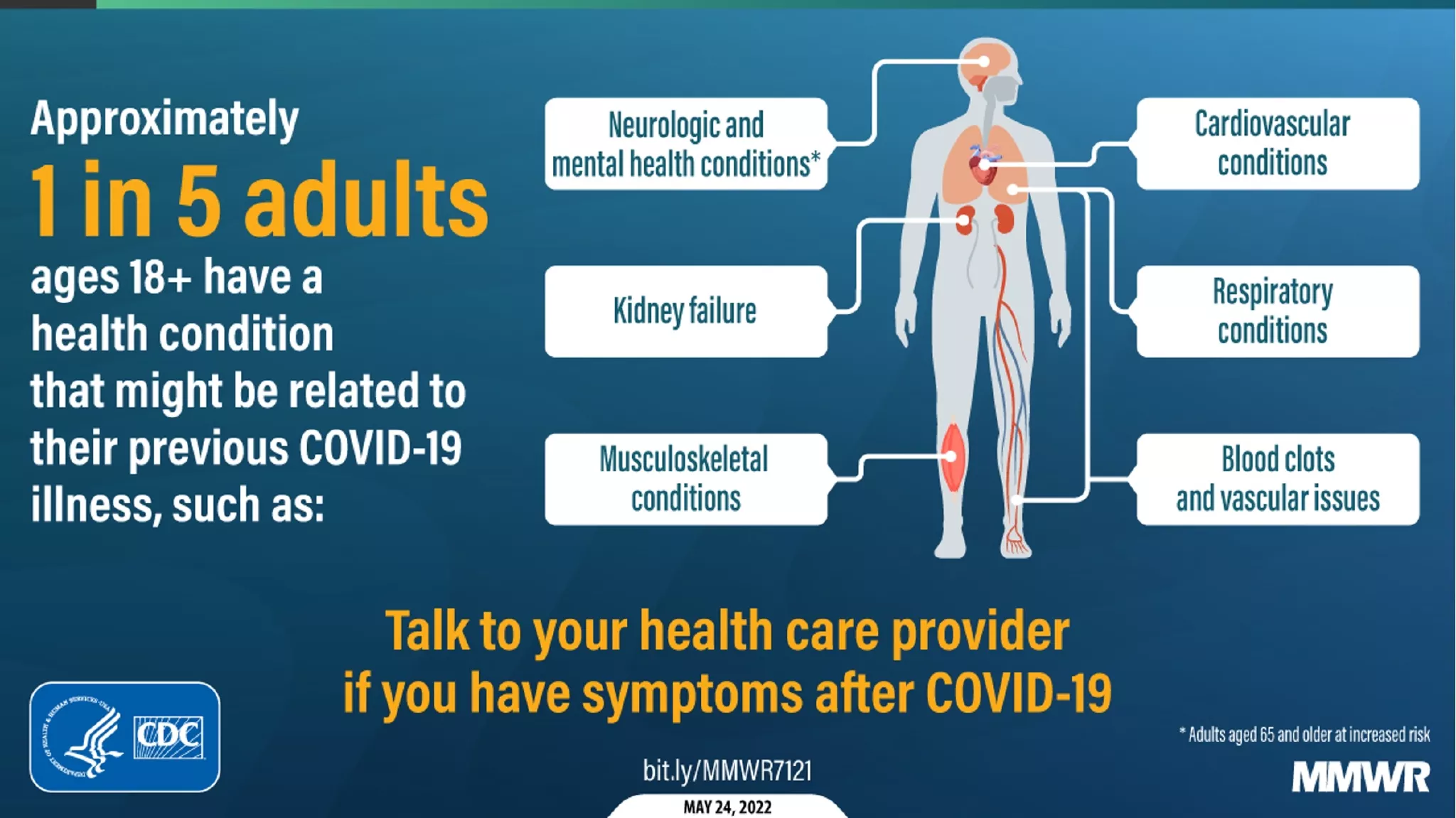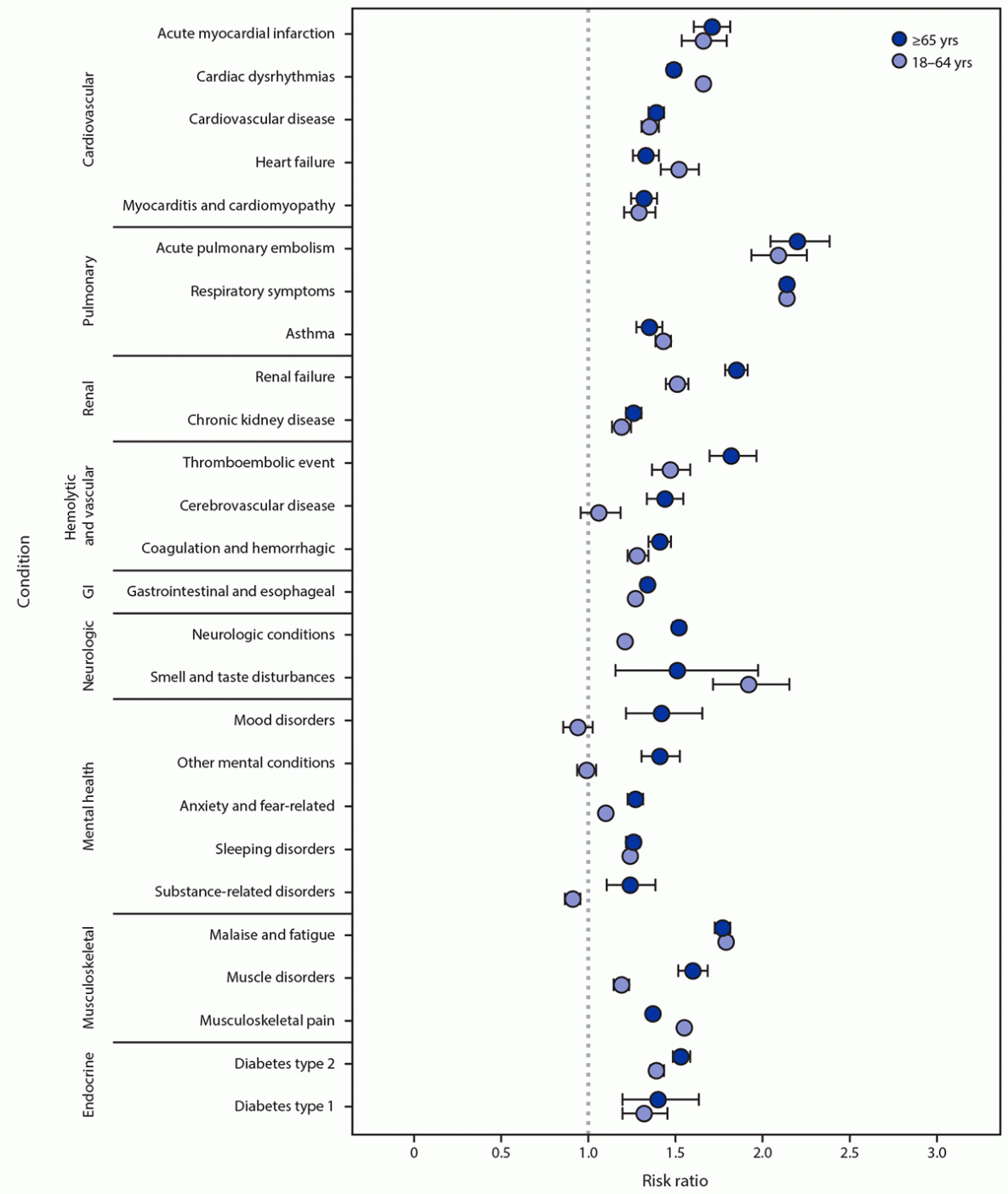On May 24, local time, the Centers for Disease Control and Prevention (CDC) of the United States released a blockbuster study with a sample size of 6340 electronic medical records: among adults infected with new crowns, nearly one fifth of them had "long covid" (the long-term impact of COVID-19)**

New crown survivors are twice as likely to develop pulmonary embolism or respiratory disease as uninfected people, the study said. As more and more Americans are exposed to and infected with novel coronavirus, reports of patients with persistent symptoms or organ dysfunction after acute infection and developing post covid disease have increased. One in five new crown survivors aged 18-64 and one in four survivors over 65 experienced at least one health condition attributable to previous new crown infections.
CDC in the United States used the electronic health record data of people over 18 years of age in the United States from March 2020 to November 2021 to evaluate the incidence of 26 long covids usually attributed to new crowns, matched the population who had not been infected with new crowns in the electronic health record, and compared the incidence rate of the two.
The 26 common long covids include:
acute myocardial infarction
Arrhythmia
Cardiovascular disease
heart failure
Myocarditis and cardiomyopathy
acute pulmonary embolism
Respiratory symptoms
asthma
renal failure
Chronic kidney disease
Thromboembolic events
Cerebrovascular disease
Coagulation and hemorrhagic diseases
Gastrointestinal and esophageal diseases
Nervous system diseases
Olfactory and gustatory disorders
Emotional disorder
Other mental illness
Anxiety and fear related diseases
Sleep disorder
Substance related mental illness (Note: including abuse of alcohol, cocaine, heroin, etc.)
Discomfort and fatigue
Muscle disease
Musculoskeletal pain
Type 2 diabetes
Type 1 diabetes
The analysis was stratified by two age groups (people aged 18-64 and over 65). Patients were followed up for 30-365 days. Among all patients with new crown ≥ 18 years old, 38% of patients experienced health events, while 16% of the control group experienced health events.
According to the study, long covid affects multiple systems: including cardiovascular, pulmonary, blood, kidney, endocrine, gastrointestinal, musculoskeletal, neurological and mental signs and symptoms. According to the age group, the highest risk ratio (RR) is acute pulmonary embolism (the risk of patients aged 18-64 is 2.1 times higher than that of healthy people, and the risk of patients aged over 65 is 2.2 times higher than that of healthy people). The risk of other respiratory symptoms in the two age groups was 2.1 times higher than that in the healthy population.
35.4% of patients aged 18-64 experienced unexpected health status, compared with 14.6% in the control group. 45.4% of patients aged 65 and over experienced health conditions, compared with 18.5% in the control group.
The researchers noted that the retrospective matching cohort was designed to analyze electronic health records from March 2020 to November 2021, a national, de identified data set containing about 63.4 million electronic health records from 50 states. There were 353164 new crown patients and 1640776 controls. The control group and the new crown patient group were matched according to 5:1.

The CDC study points out that the most common health conditions in the two age groups are respiratory symptoms and musculoskeletal pain. In both age groups, the highest risk ratio was related to lung diseases, including acute pulmonary embolism and respiratory symptoms. Among patients over the age of 65, the risk of all 26 diseases in patients with new coronavirus infection was higher than that in the control group, ranging from the lowest increase of 1.2 times (material related mental illness) to the highest increase of 2.2 times (acute pulmonary embolism). In the 18-64 age group, there were 22 diseases with higher risk in the new crown group than in the control group, and the risk ratio increased from the lowest 1.1 times (anxiety) to the highest 2.1 times (acute pulmonary embolism); No significant differences were observed in cerebrovascular disease or mental health status (such as emotional disorders, other mental conditions and substance related disorders) in this age group.
In terms of age group performance differences, the risk of arrhythmia (risk increase of 1.7 times) in the 18-64-year-old group was higher than that in the 65-year-old and older group (risk increase of 1.5 times). In terms of musculoskeletal pain, the risk of 18-64-year-old patients with new crown (risk increased by 1.6 times) is higher than that of the age group over 65 (risk increased). The risk ratio of 10 diseases in patients aged 65 and above with new coronary artery disease was significantly higher than that in the 18-64 age group, including renal failure, thromboembolic events, cerebrovascular diseases, type 2 diabetes, muscle diseases, nervous system diseases and mental health diseases (including emotional disorders, anxiety, other mental diseases and substance related mental diseases).